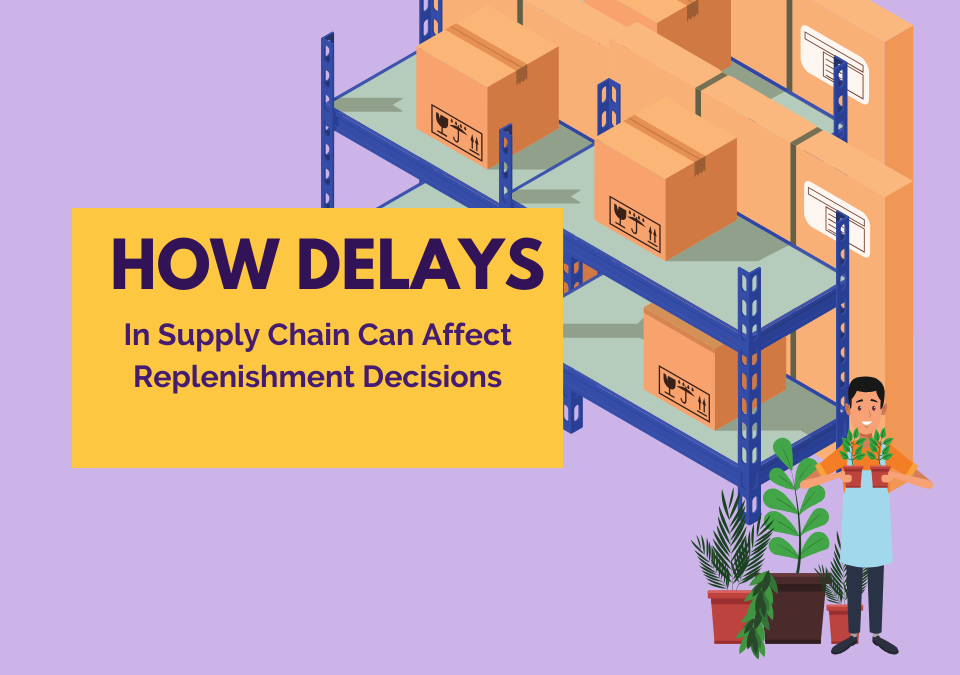
Preparing For Your Eventual Exit
October 15, 2024
Key Takeaways from MANTS 2025
January 13, 2025As a vendor, replenishing product is significantly impacted by supply chain issues. Disruptions in raw material availability, transportation logistics, or manufacturing processes can lead to delays in production time, causing difficulties in meeting customer demand and potentially resulting in stock shortages or overstocking depending on the nature of the disruption. This can be further exacerbated by issues like the “bullwhip effect” where fluctuations in demand are amplified throughout the supply chain, causing erratic ordering patterns from retailers to suppliers.
Key Ways the Supply Chain Affects Product Replenishment as a Supplier
- Lead time fluctuations:
Delays in receiving raw materials or components due to supply chain disruptions can lengthen lead times, making it harder to predict delivery dates and potentially impacting production schedules accurately.
- Inventory management challenges:
- Stockouts: If a supplier cannot access necessary materials, they may run out of stock, leading to an inability to fulfill customer orders.
- Excess inventory: Conversely, if anticipating potential disruptions, suppliers might overstock, leading to holding costs and potential waste.
- Price volatility:
Fluctuations in raw material costs due to supply chain issues can significantly impact the price of finished goods, affecting profit margins and customer pricing.
- Production disruptions:
Manufacturing stoppages caused by missing components or transportation delays can lead to production delays and missed delivery deadlines.
- Demand forecasting difficulties:
Unpredictable supply chain disruptions make it harder to accurately forecast customer demand, leading to potential mismatches between production and sales.
How to Mitigate the Impact
- Diversifying suppliers:
Sourcing materials from multiple suppliers can help mitigate risks associated with single-source dependence if one supplier faces disruptions.
- Building safety stock:
Maintaining a buffer inventory of critical components can help manage short-term supply chain disruptions.
- Improved communication and collaboration:
Maintaining open communication with both upstream and downstream partners in the supply chain allows for better coordination and proactive response to potential issues.
- Technology adoption:
Utilizing advanced data analytics and supply chain management software can help monitor inventory levels, predict demand fluctuations, and optimize replenishment strategies.
Shipment Delays
Here are some current transportation delays:
- FedEx
Some areas of North Carolina and the Southeastern U.S. are experiencing potential service delays and disruptions due to Hurricane Helene.
- Shipping
The COVID-19 pandemic and the Russian invasion of Ukraine have caused shipping delays. The COVID-19 pandemic caused a container shortage due to increased demand for imports from Asia, which outpaced the manufacturing of shipping containers. The Russian invasion of Ukraine led to the closure of ports in Russia and halted operations in the Black Sea.
Other common causes of shipping delays include Global emergencies like wars and pandemics, high demand, and delays at warehouses and ports.
Some Ways to Reduce Shipping Delays
- Working with suppliers, distribution centers, and warehouses near your target market
- Automating the process and investing in technology
- Developing a clear return policy
- Creating a customer-centric shipping policy
Conclusion
Growers that continue to adapt will set their business up to succeed. If you are looking for software with exceptional customer support, updates, and innovative solutions we have several solutions to help your business, Learn how GrowPoint and GrowPoint Cloud can help you manage your operational inventory with sophisticated, yet easily approachable tools.
Learn more how DTS can help you with Vendor Managed Inventory or your pay by scan customers or contact us today for a demo.




